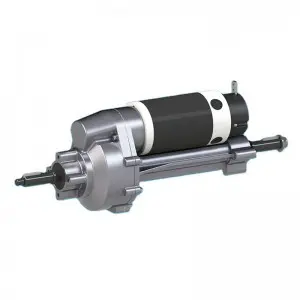When it comes to maintaining the health and performance of your vehicle, it’s crucial to understand the various fluids that keep your vehicle running smoothly. One of the most confusing issues for many car owners is the difference between transmission fluid and transaxle fluid. While both are critical to the proper functioning of a vehicle’s drivetrain, there are distinct differences between the two.
First, let’s clarify what each type of fluid is and its specific role in vehicle operation. Transmission fluid is a lubricant used to keep the moving parts within the transmission system properly lubricated and cooled. It also acts as hydraulic fluid, allowing the transmission to shift gears smoothly and efficiently. Transaxle oil, on the other hand, is designed for vehicles with a transaxle configuration, where the transmission and differential are combined into an integrated unit. This setup is common in front-wheel drive and some all-wheel drive vehicles.
One of the main differences between transmission fluid and transaxle fluid is their specific formulation and properties. Transaxle oils are designed to meet the unique needs of transaxle systems, which often require different additives and friction modifiers compared to traditional drivetrains. These specialized additives help optimize the performance and life of transaxle components, ensuring smooth operation and minimal wear.
Another major difference between these two fluids is their compatibility with different types of delivery systems. While transmission fluids are designed for use in a variety of transmission configurations, including automatic, manual, and continuously variable transmissions (CVT), transaxle fluids are specifically formulated for use in transaxle settings. Using the wrong type of fluid in a transaxle system can cause performance issues and potential damage to transmission components.
It is important to note that some vehicles may use a single type of fluid for both transmission and transaxle functions. In this case, the fluid is engineered to meet the requirements of both systems, providing the lubrication and hydraulic properties necessary for smooth operation. However, it is crucial for vehicle owners to consult their owner’s manual or consult a qualified mechanic to ensure they are using the correct fluid for their specific vehicle.
When maintaining and changing fluids, both transmission oil and transaxle oil need to be checked regularly and replaced when necessary. Over time, these fluids can become contaminated with debris and lose their effectiveness, potentially causing transmission or transaxle problems. Following the manufacturer’s recommended fluid change service intervals is critical to maintaining drivetrain life and performance.
In summary, while transmission fluid and transaxle fluid both play a vital role in the operation of a vehicle’s transmission system, there are distinct differences between the two. Transaxle oil is formulated specifically for transaxle configurations to provide the necessary lubrication and hydraulic properties for optimal performance. Understanding the specific requirements of your vehicle’s drivetrain and using the correct fluids are critical to maintaining the health and longevity of your vehicle. By staying informed and proactive about fluid maintenance, vehicle owners can ensure that their transmission and transaxle systems continue to run smoothly and efficiently.
Post time: Jun-14-2024


